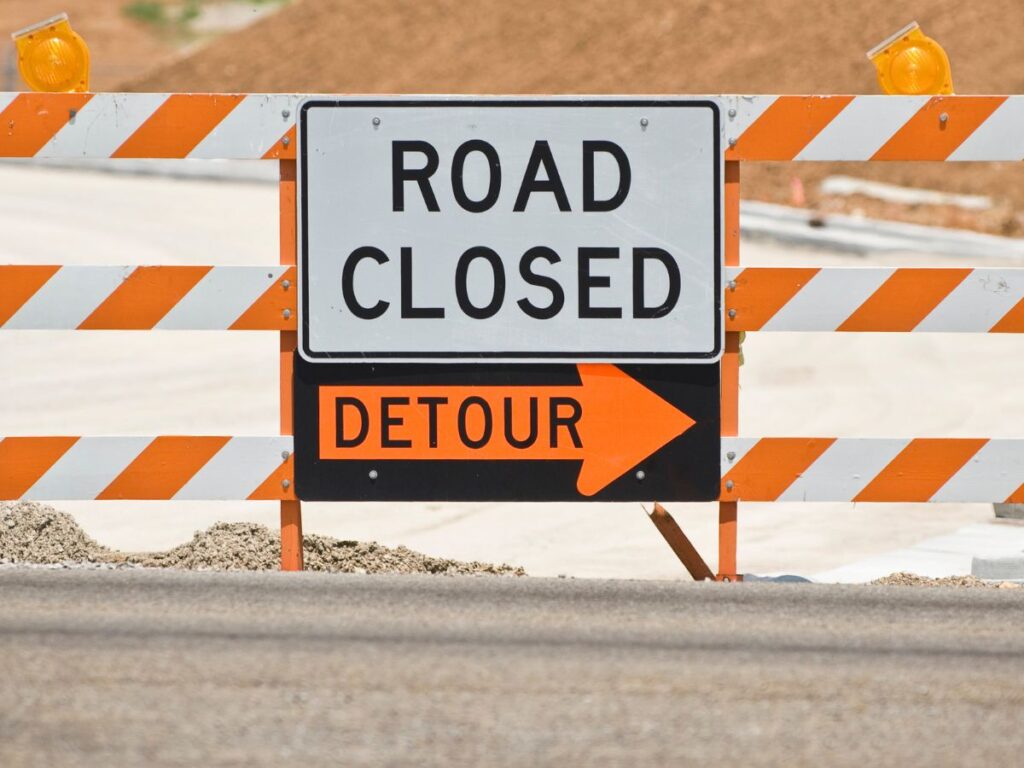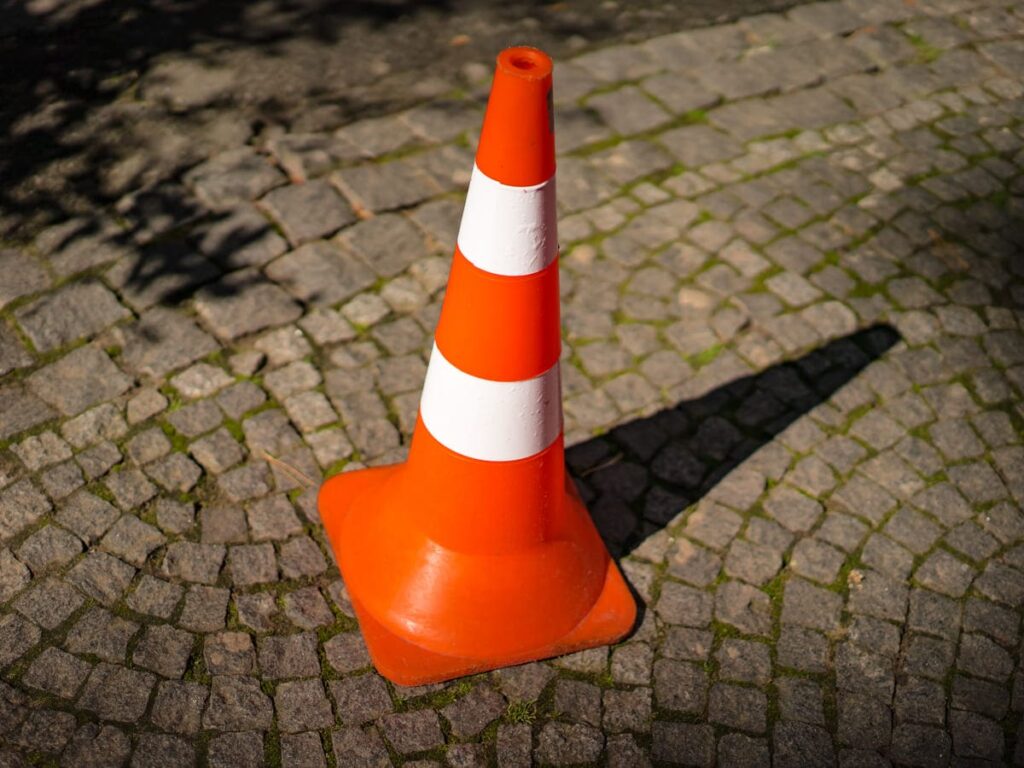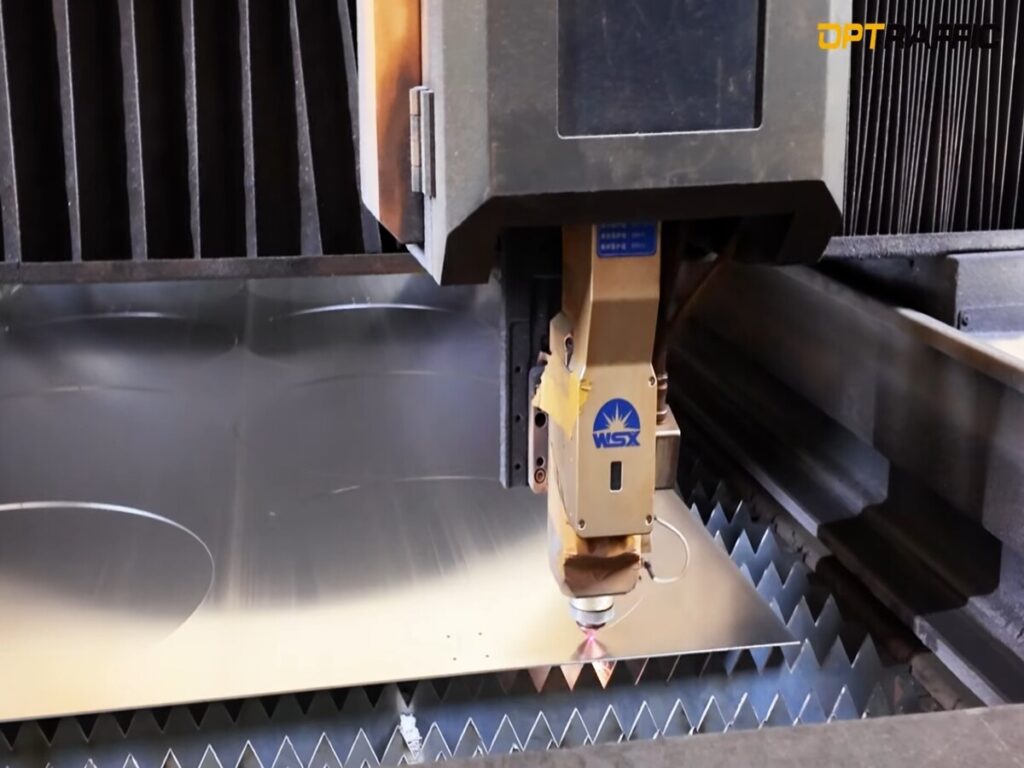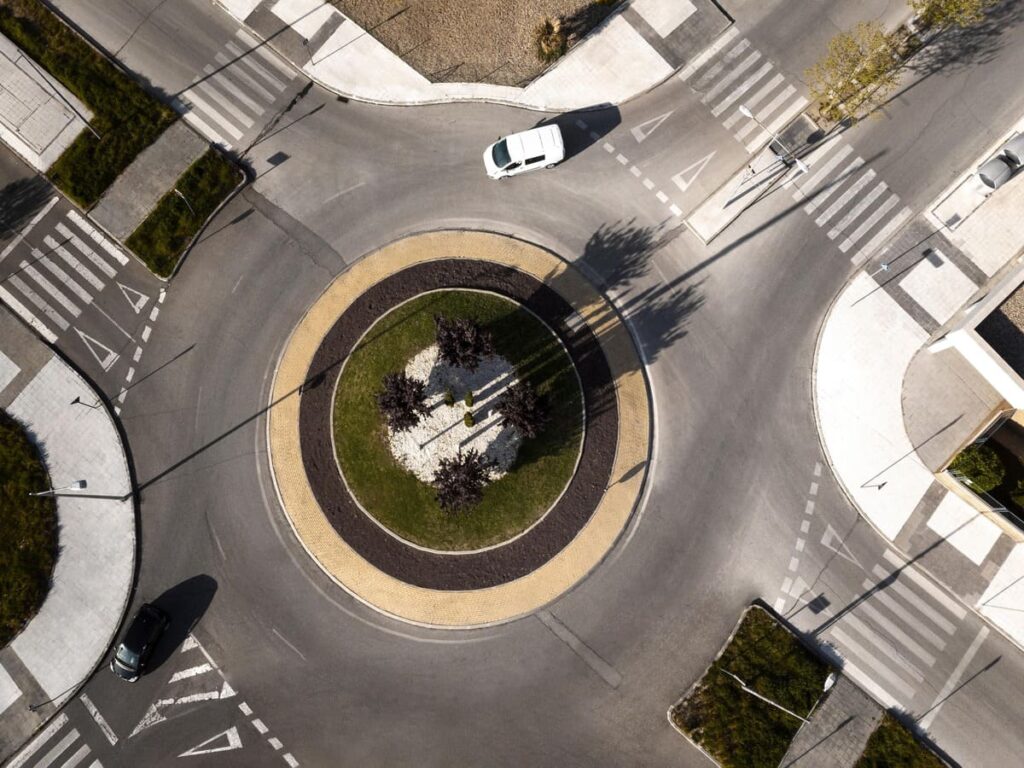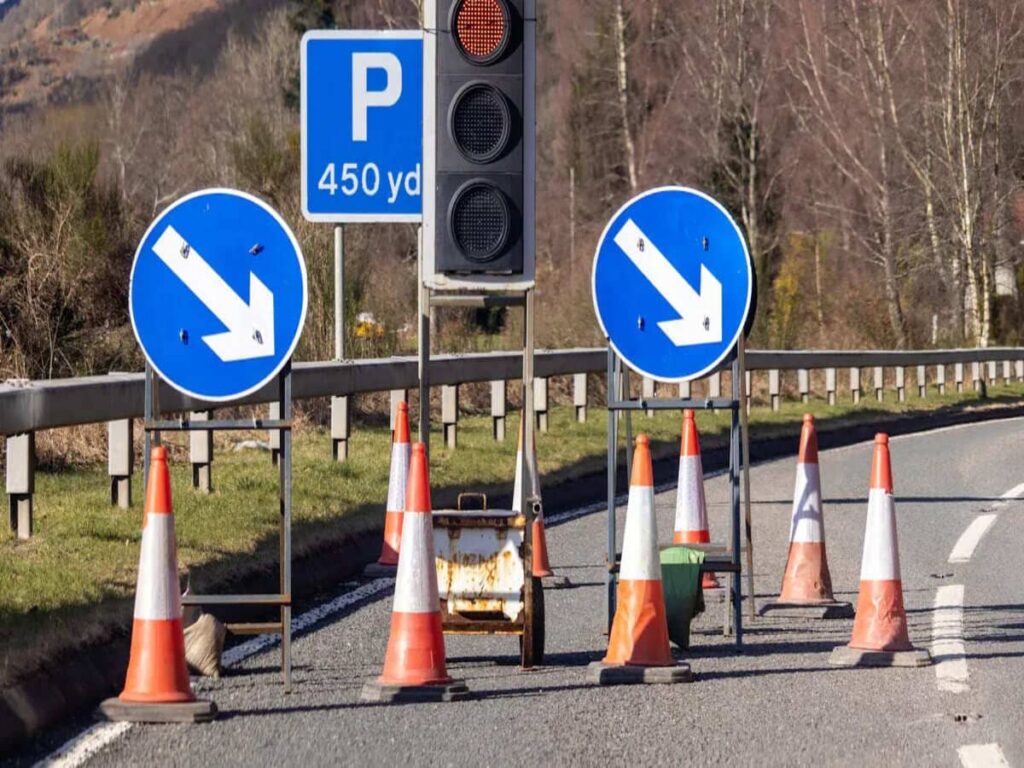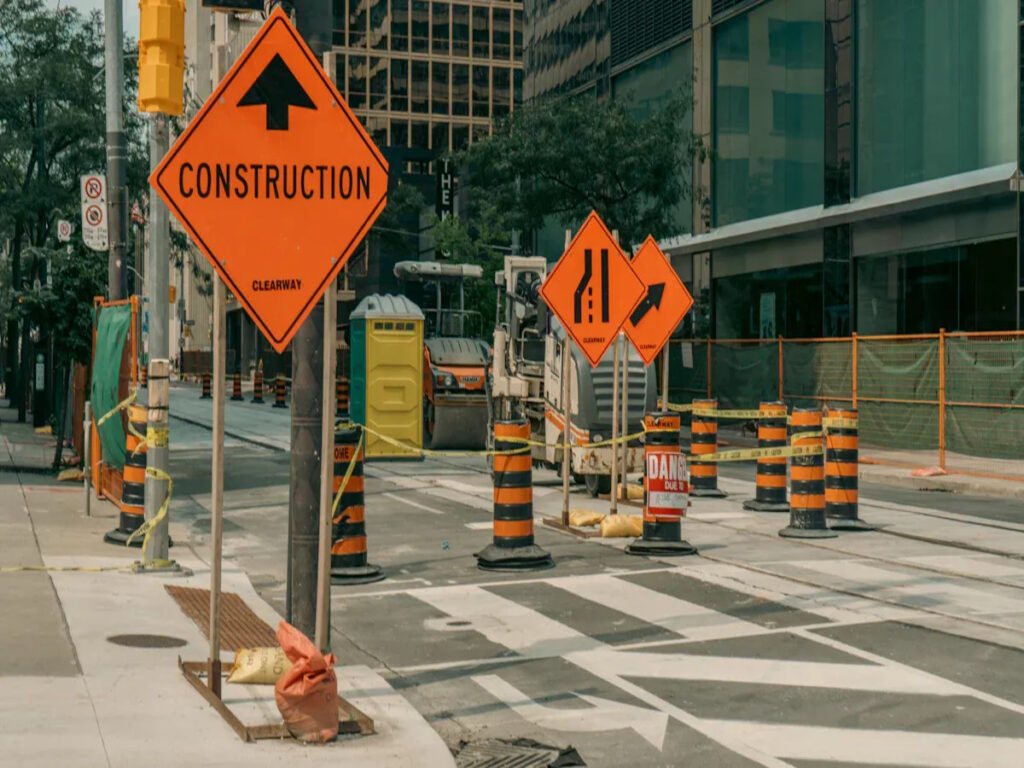
علامات الطرق على الطرقات الضخمة مهمة للغاية للسلامة. إنها تساعد في الحفاظ على مناطق البناء آمنة للجميع. يجب على شركات البناء اتباع قواعد السلامة الصارمة. يجب أيضًا على فرق إدارة المرور ومقدمي خدمات تأجير اللافتات اتباع هذه القواعد. تسهل إشارات المرور الخاصة ببناء الطرق رؤية منطقة العمل. أنها تساعد في توجيه السيارات والأشخاص عبر الأماكن المزدحمة. لتلبية القواعد, يجب على الفرق التخطيط بعناية. يجب عليهم وضع اللافتات بالطريقة الصحيحة. يحتاجون أيضًا إلى التحقق من العلامات كثيرًا. قد يكون تحريك هذه العلامات ووضعها أمرًا صعبًا. وذلك لأن العلامات كبيرة وثقيلة. يجب أن تتبع كل علامة القواعد التي يحددها القانون. وهذا يساعد في الحفاظ على سلامة جميع مستخدمي الطريق. الإدارة الجيدة لهذه العلامات تساعد الجميع على اتباع القواعد. كما أنه يجعل كل منطقة عمل أكثر أمانًا.
في أوبترافيك, many of our clients are construction companies who rely on our high-quality علامات أعمال الطرق to keep their work zones safe and compliant. We provide durable, oversized signs that meet all safety standards, ensuring your projects run smoothly and safely. Explore our range today to support your construction traffic management needs.
Roadwork Signs: Types and Challenges
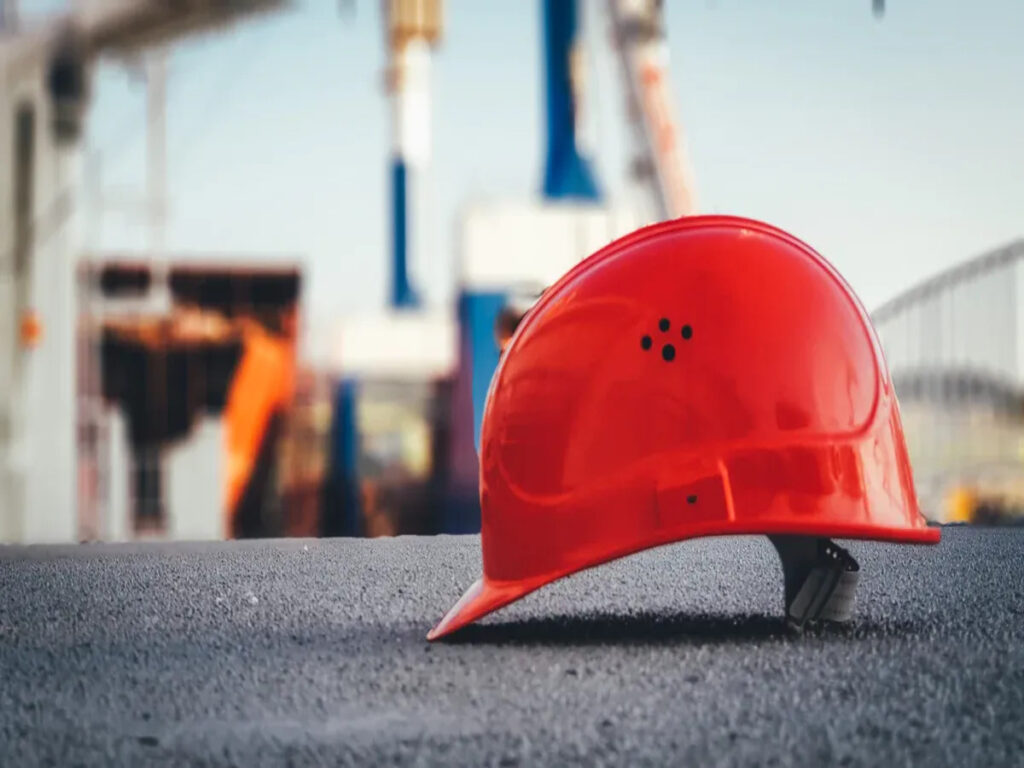
Oversized Signage Explained
Oversized roadwork signs are very important in construction zones. هؤلاء signs include T-series models like T1-1, T2-1, and T3-1. Road construction traffic signs come in different shapes and sizes. Each type is made for a special job. بعض الأنواع الشائعة:
- A-Frame barricades are light and good for closing lanes or pavements.
- المتاريس المملوءة بالماء last long and are used for big projects.
- Crowd control barricades are steel or plastic and guide people walking.
- Vertical panels work with other signs to help drivers.
- Concrete barriers are strong and protect on highways.
| نوع علامة | Typical Oversized Dimensions (بوصة) |
|---|---|
| Horizontal Alignment | 48 س 48 |
| Combination Horizontal Alignment/Advisory Speed | 48 س 48 |
| One-Direction Large Arrow | 60 س 30 |
| Two-Direction Large Arrow | 60 س 30 |
| Chevron Alignment | 24 س 30 |
Oversized signage helps people see traffic signs in busy places. Signs must be the right size and put in the right spot. على سبيل المثال, highway boards are often bigger than 1200 مم بواسطة 800 مم. These signs are put up high so drivers can see them over cars. Flashing LED arrow boards and shiny materials make signs clearer and safer, خاصة في الليل أو عندما تمطر.
القضايا المشتركة
There are many problems with oversized roadwork signs. Moving big road construction traffic signs needs special trucks and good planning. Heavy signs are hard to lift and set up. Teams must be careful to stop anyone getting hurt.
Weather can also cause problems for signs. Strong winds or storms might move or break signs. Using strong materials helps signs stay safe and easy to see. Putting signs in the right place is also hard. Signs must not block what drivers see or make them confused. Advance warning signs and detour signs must be far enough away so drivers have time to get ready.
Traffic management teams must check signs often. Broken or lost signs can cause crashes or slow traffic. Temporary traffic control needs clear and well-placed roadwork signs. If all rules are followed, road work ahead warnings, طرق التفافية, and advance warning signs keep workers and road users safe.
Safety and Installation
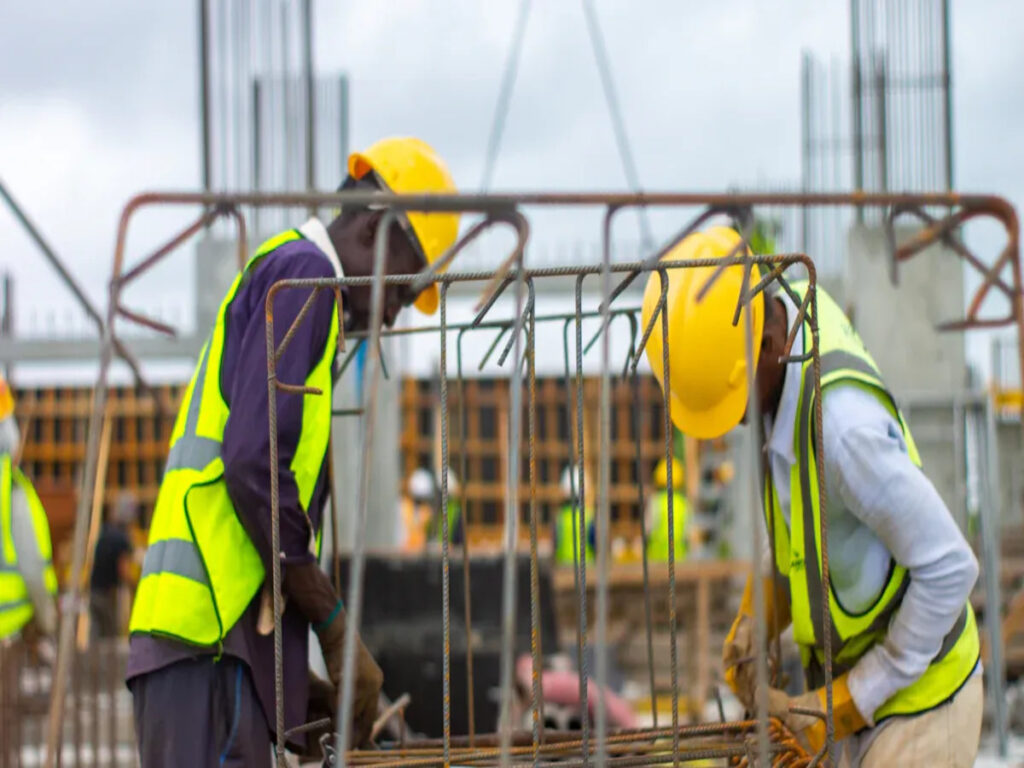
إعداد الموقع
Getting the site ready is very important for safe sign placement. Teams collect all the tools and equipment they need, like drills, السحابات, سلالم, and safety gear. Workers check each sign for damage or missing parts. They also test any electrical parts before starting. Teams use careful measurements to mark where signs should go. This helps make sure signs face traffic and are easy to see.
التالي, workers test the soil. They look at the type, how packed it is, and if it drains well. أحيانا, they add things like lime or cement to make the ground stronger. Big machines press down the soil to help it hold weight. Teams put up fences or barriers to keep people out and stop accidents. Warning signs tell everyone about dangers or areas they should not enter.
ملحوظة: Teams check the site often for dangers like loose wires or weak structures. Fixing these problems quickly keeps everyone safe.
قبل طرح العلامات, teams clear the area and mark the edges with flags or stakes. They plan for water to drain away so the ground stays strong. Teams watch the weather and change plans if storms or strong winds come. A final check makes sure everything is ready and safe before work starts.
Secure Installation
Putting up oversized road construction traffic signs needs careful work. Workers dig deep holes for signs that go in the ground. They make sure posts are straight and use concrete to hold them. ثم, they attach the sign. For signs with lights, teams follow safety steps and check all wires.
Different traffic signs need different supports, توقيع الإطارات, أو بين قوسين. Heavy metal signs need strong brackets, البراغي, أو المشاركات. Wood signs might need extra traffic sign frames or metal posts, اعتمادا على حجمها. Outdoor signs must handle wind, مطر, والتغيرات في درجات الحرارة. Using treated wood or rust-proof metal helps signs last longer and stay safe.
Adjustable brackets let teams change the height or angle of signs. This makes signs easier to see and follow the rules. Strong brackets and frames help big signs stand up to wind and bad weather. Foldable frames and weighted bases help temporary signs stay in place. Teams check for rust, أجزاء فضفاضة, or damage to keep signs safe.
Risk management is important for safety. Teams look for dangers by talking to workers and using special tools. They choose the best ways to control risks, thinking about cost and safety. The best way is to remove the danger completely. Teams watch how controls work and change them if needed, following safety steps.
Wind and rain can make signs fall or move. Teams use materials tested to stand up to wind and hits, especially in open or coastal places. Post caps stop water from getting in and causing rust. في المناطق المزدحمة, teams use أسوار السلامة أو حواجز المرور على الأقل 1.2 ارتفاع متر. They also use lights when it is hard to see.
Putting road construction traffic signs in the right place helps drivers and people walking see them early. Teams make sure signs do not block views or confuse anyone. Signs must be at the right height to be seen well. Teams check and fix signs often to keep them working and safe.
الامتثال واللوائح
المعايير القانونية
Road construction traffic signs must follow strict rules for safety. Every country and region has its own set of rules. في أستراليا, teams use AS 1742.3 for roadwork traffic control. Other rules are AS/NZS 4360:1999 for risk management and AS/NZS 4602:1999 for high-visibility clothing. Western Australia uses the Road Traffic Code 2000. Traffic controllers there need special training. These rules help teams know how to use oversized road construction traffic signs safely.
Teams must follow these rules when putting up and moving road construction traffic signs. This makes sure signs are the right size, شكل, والسطوع. It helps drivers and people walking understand the signs quickly. Oversized road construction traffic signs must also be put in the right place and at the right height to stop confusion and keep everyone safe.
ملحوظة: Following Australian and local rules helps stop accidents and keeps projects legal.
عمليات تدقيق مستمرة
Regular checks and inspections are important for following the rules. Teams must make sure all signs meet the latest rules. Checks look at the condition, الموضع, and how easy the signs are to see. They also check if the signs match the traffic management plan.
Quality teams use lists to check each step. They look for broken, مفتقد, or faded parts. إذا وجدوا مشاكل, they fix or swap the signs quickly. This keeps the work zone safe and lowers the chance of accidents.
عدم اتباع القواعد يمكن أن يسبب مشاكل كبيرة. Teams might get fines or have to stop work. Unsafe road construction traffic signs can confuse people or cause crashes. Legal trouble can happen if teams ignore the rules or do not update their plans.
Teams must also check their temporary traffic control often. They make sure the road construction traffic signs fit the current work zone. If the project changes, teams update the signs and plans to keep everyone safe.
نصيحة: Plan regular checks and keep records of all inspections. This helps show you follow the rules and care about safety.
Road construction traffic signs must always meet the newest rules. Teams should train workers on safety and following the rules. They should also learn about any changes to Australian or local rules. Good planning and regular checks help keep everyone safe and follow the law.
Costs and Freight Planning
Freight Charges
Oversized roadwork signs usually cost more to ship. This is because they are big and heavy. They also need special care when moved. Carriers charge extra for large items. These signs take up lots of space in trucks. Special trailers like flatbeds are often needed. وهذا يجعل التكلفة ترتفع. Delivering to building sites or hard-to-reach places costs more too.
Other things can make shipping more expensive:
- The shape and how thick the sign is changes how it fits in a truck.
- Some signs need special machines to lift them.
- Toll roads, fuel costs, and other fees add to the price.
- Following rules for oversized loads can cost more.
The table below shows what affects shipping costs:
| عامل التكلفة | Impact on Freight Charges |
|---|---|
| الوزن والحجم | Bigger loads cost more |
| Special Handling | Extra tools mean higher fees |
| Delivery Location | Hard-to-reach sites cost extra |
| أنظمة | Permits and rules add to cost |
| مسافة | Longer trips cost more |
Budgeting Tips
Planning for shipping costs helps keep projects on track. Teams can use some ways to save money:
- Buying lots at once and sending them together saves on shipping. Grouping deliveries makes each trip better.
- Using local suppliers or centres means shorter trips. هذا يوفر الوقت والمال.
- Working with suppliers and customers helps plan better. Good planning means less waiting.
- Making deals with many carriers can get lower prices. Checking bills helps find mistakes.
- Packing signs well with standard materials keeps them safe and saves space.
نصيحة: Route planning software helps teams pick the best way to deliver. This saves fuel and time, خاصة في المناطق المزدحمة.
Shipping costs change the total project budget. High fees can change plans and need more money. Teams should add shipping costs to their first budgets. Checking signs often stops last-minute orders, التي تكلف أكثر. Careful planning keeps traffic management safe and not too expensive.
Signage Trends and Innovation
Materials and Sustainability
في السنوات القليلة الماضية, there have been many changes in materials for oversized roadwork signage. New materials make signs lighter and stronger. هم أيضا أفضل للبيئة. The table below lists some new choices:
| مادة | الخصائص الرئيسية | Use for Oversized Signage |
|---|---|---|
| Light-generating cement | Stores sunlight by day, glows at night, صديقة للبيئة, خفيف الوزن | Improves night visibility without extra lights |
| Transparent aluminium | Scratch-resistant, قاسٍ, handles high heat, resists weather and chemicals | Lasts longer in harsh traffic conditions |
| Microbial cellulose | قابلة للتحلل, قوي, made from renewable sources, تكلفة منخفضة | Reduces environmental impact, keeps signage light |
| Carbon-fibre balsa | Combines light balsa with strong carbon fibre | Ideal for large signs needing both strength and low weight |
Many experts think wood and metal are good for sustainable signage. Wood is natural and grows back. Metal is strong and can be used again. Some companies use paper-based boards like PlyCorr™ and Falconboard® instead of plastic foam. These boards can be recycled if the right inks and glues are used. Glass is another choice. It can be recycled many times, but it is not used much for big roadwork signs.
نصيحة: Picking eco-friendly materials and safe inks helps cut down waste and pollution from signage.
عند اختيار المواد, teams should think about the whole life of the sign. Using recycled aluminium or FSC®-certified timber saves energy and cuts greenhouse gases. Low-impact coatings and digital printing are also better for the environment. Councils often want signs that meet green rules and can be recycled when finished.
التكنولوجيا الذكية
Smart technology is changing how traffic teams use signage in construction zones. LED digital signs now give real-time updates about road hazards, طقس, والحوادث. These signs help drivers and people walking stay safe by showing clear messages that change as needed. Some LED signs warn about pedestrian crossings and show countdown timers. Others tell drivers about slow vehicles or changes in traffic.
علامات الرسائل المتغيرة LED (VMs) use live data from sensors and traffic systems. They can show warnings, حدود السرعة, or new routes during emergencies. These signs connect with smart city networks to help manage traffic and keep roads safe. Studies show that LED VMS are easier to see, انخفاض معدلات الحوادث, and use less energy than old signs.
Solar-powered signs are also popular. They work well in faraway places and do not need to connect to the power grid. These traffic safety signs save money over time and help the environment by using clean energy. They stay bright even during power cuts, so they are reliable for safety. Teams must put them where they get enough sunlight and keep them safe from theft.
Construction teams make things safer by picking signs that are easy to see. They put these signs in the best spots so people notice them. Teams check the signs often to make sure they work well. Using weatherproof materials helps signs last longer and stay useful. Teams follow the law and change signs if the site changes. This keeps workers and road users safe. Planning costs carefully and buying in bulk saves money. Good links with suppliers help projects stay on budget. Asking experts for advice means teams use the newest safety and compliance ideas on every project.
التعليمات
What makes a roadwork sign oversized?
و oversized roadwork sign is bigger than normal signs. These signs are easier to see in busy or fast places. They are often more than 1200 مم بواسطة 800 mm in size. Bright colours or shiny materials help people notice them.
Why do teams need special equipment for installation?
Oversized signs are heavier and taller than normal signs. Teams use lifting tools and strong brackets to put them up. Safety gear helps workers stay safe. These tools keep the signs steady in any weather.
How often should teams inspect oversized roadwork signs?
Teams should look at the signs every day when working. They check for damage, أجزاء فضفاضة, and if the sign can be seen. Checking often helps stop accidents and keeps everyone safe.
Do oversized signs require special transport permits?
نعم, most oversized signs need special transport permits. Carriers must follow local road rules. Permits help make sure signs arrive safely and stop fines or delays.
Can teams recycle old oversized roadwork signs?
Many oversized signs are made from things like aluminium or treated wood. Teams should look at local recycling rules. Recycling helps cut down on waste and is good for the environment.

